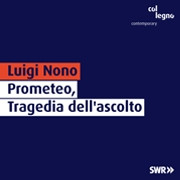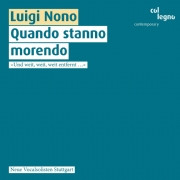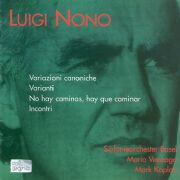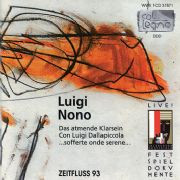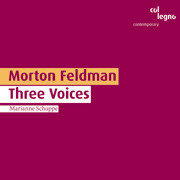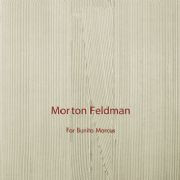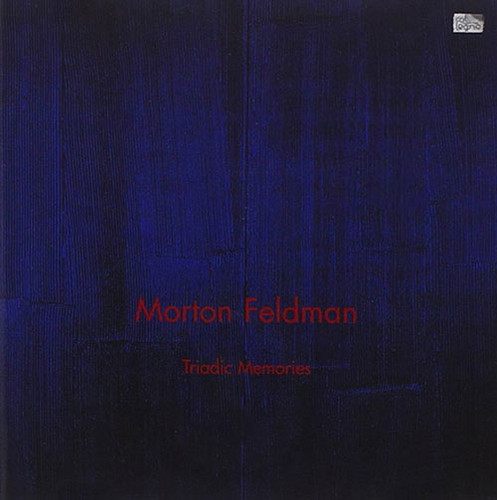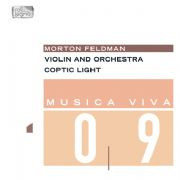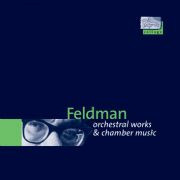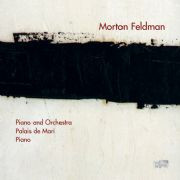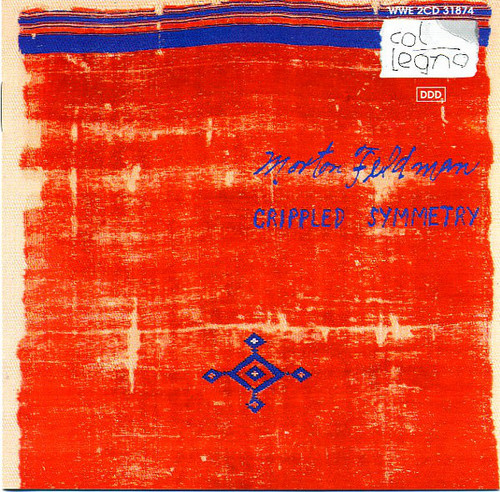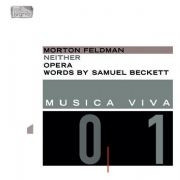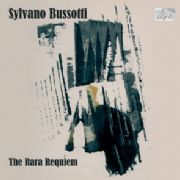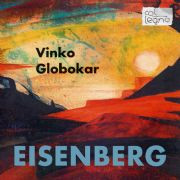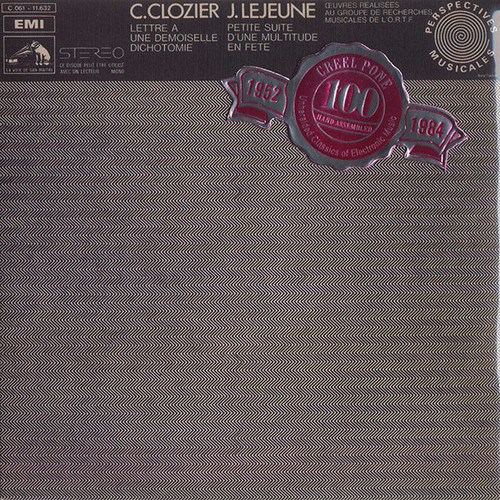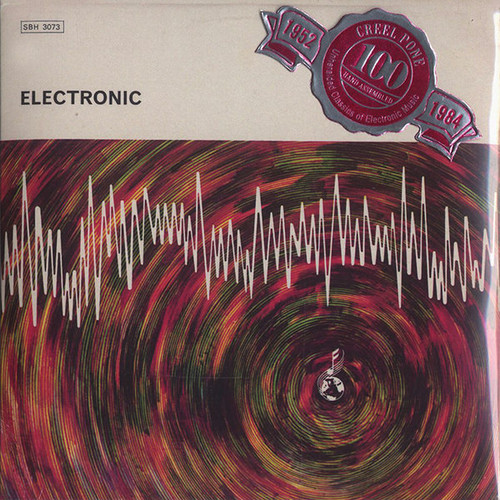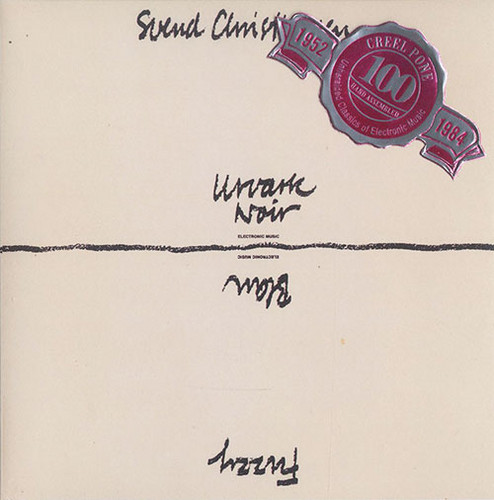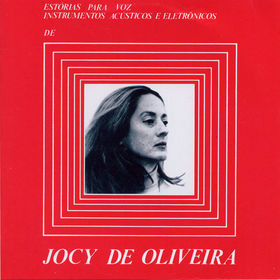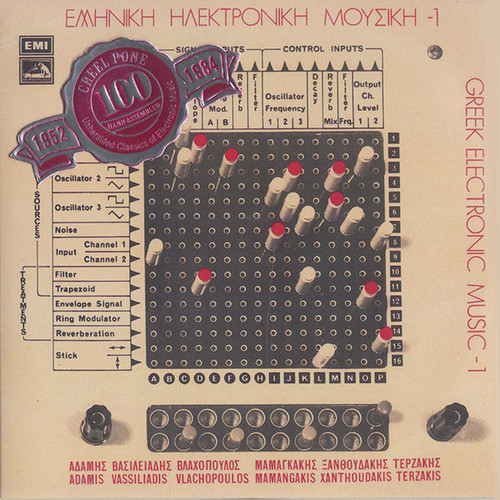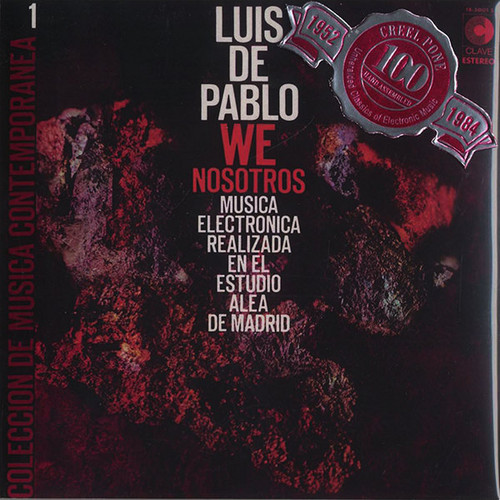Reissues
Prometeo, Tragedia dell\'ascolto
One of the most significant musical works of the twentieth century is now available in an archive-quality recording. Only now, using surround-sound technology can the twenty-six channels be balanced out and distributed, spatially and dynamically, wit…
Quando Stanno Morendo
Works of art are often triggered by private events. Sarà dolce tacere (1960), for example, was written on the occasion of the 40th birthday of Bruno Maderna, Nono's (former) teacher and close friend; and also in 1960 Nono wrote Ha venido for his daug…
Variazioni canoniche sulla serie dell\' op. 41 di Arnold Schoenb
"All my works always start out from a human incentive: an event, an experience, a text in our lives leads to my instinct and my conscience and wants me to bear witness, as a musician and as a man." This is how Nono, in 1960, described his motivation …
Das atmende Klarsein
Researching into the fringe ranges of hearing, and actually going to the limits: electronics – live or prerecorded – was one of the tools employed by Luigi Nono in pursuance of this object. In his work Das atmende Klarsein he moreover endeavored to e…
Three Voices
This piece is sung by the Swiss “deep voice”, Marianne Schuppe in trio with herself, a feat made possible by playing back recordings of her own voice. This is not minimal music; melodic lines arise, sensual, beautiful, and undoctored, swaying like a …
For Bunita Marcus
For Bunita Marcus was written in 1985. "This work, which I have dedicated to Bunita Marcus, [...] deals with the death of my mother, and with the notion of a slow death. I simply didn't want the piece to die. So I used this unwillingness compositiona…
Triadic Memories
In other works, such as For Philip Guston, which continues for several hours, Morton Feldman actually would go beyond the bounds of possibility, also overtaxing the concentration of both his musicians and his audience. Nevertheless, like these other …
Violin and Orchestra / Coptic Light
Morton Feldman dedicated a whole series of compositions to the relationship between solo instruments and the orchestra: after Cello and Orchestra (1972), Piano and Orchestra (1975), Oboe and Orchestra (1976) and Flute and Orchestra (1977/78) his Viol…
Orchestral Works & Chamber Music
In the early 1970s Feldman increasingly turned his attention to works for orchestra, in most cases combined with a solo instrument, like Piano and Orchestra (1975). One aspect that was important to him in all of these works was a research into sound,…
Piano and Orchestra, Palais de Mari, Piano
In the early 1970s, Feldman increasingly turned his attention to works for orchestra, in most cases combined with a solo instrument. The compositions dating from this period include, among many others, Cello and Orchestra (1972) or Oboe and Orchestra…
Crippled Symmetry
Music and carpets? Well, the latter's slightly irregular patterns certainly inspired Morton Feldman to write his Crippled Symmetry (1983). "With Feldman, composing more and more takes on the nature of writing a diary; he weaves and knots his sounds l…
Neither
An opera? An anti-opera? A monodrama? Whatever it may be: Neither (1977) marks the meeting of the kindred artistic souls of Samuel Beckett and Morton Feldman.
The Rara Requiem
Added to these are bits and pieces of first names of real people and opera characters, and numerous quotes from older works by Sylvano Bussotti – who combines it all to a work that is also a grand opera: The Rara Requiem was written as the third part…
Eisenberg
Archaic sounds, songs as psychodramas, plowing through the depths and shallows of the orchestra: experience Globokar's cosmos of original, intense music.
Perspectives Musicales
Well ... Mr. P.C. C.P. has clearly taken a peek at my “Holy Grail” list - in it, nestled amongst such unattainable classics as Karel Appel’s “Musique Barbare”, Paul Boisselet’s “Le Robot”, and Il Gruppo Nuova Consonanza’s ill-fated Cinevox-label albu…
Recorded Music For Film, Radio & Television: Electronic SBH 3073
Recent claims made re: Tod Dockstader’s absence from the public eye since releasing his owl-label lps in the late 60s are somewhat off. In 1979 this and another “companion” volume were released on the boosey & hawkes library music label; consisting o…
Urvarte - Noir - Blau (electronic music)
There’s not much in the way of documentation on the Early Danish Electronic Music scene other than the Else-Marie Pade, Jørgen Plaetner, and Gunner-Möller Pedersen discs on DaCapo - all fantastic sets full of wonder, but mired in a certain air of gov…
Estórias para Voz, Instrumentos Acústicos e Eletrônicos
One composition from 1967 (the first), the rest from the late 70s. Here we have patiently forming compositions of a variety of means, although to be fair, the order in the title is clearly in order of importance. The voice is the most important eleme…
Greek Electronic Music
A collection of late 60s pieces from 6 hellenic composers; only one of which even rates a single listing in the Hugh Davies book (that would be Michael Adamis.) See that on the cover? its the patch-bay of an ems vcs3, possibly the most legendary/cove…
We (Nosotros) Electronic Music
1969 plunderphonic / Musique Concrète epic from Luis De Pablo, a Madrid-based Composer working out of his own home-studio - referred to in the Hugh Davies catalogue as simply “Madrid (Luis De Pablo.)” I’ve seen a few different versions of this rec…
